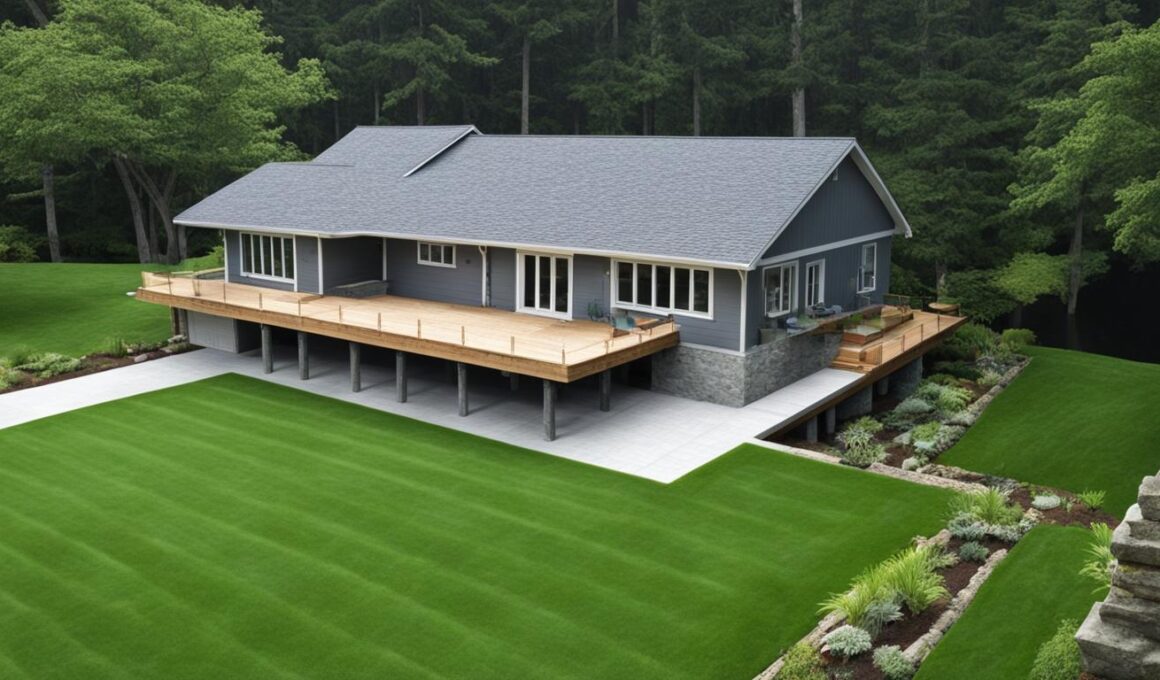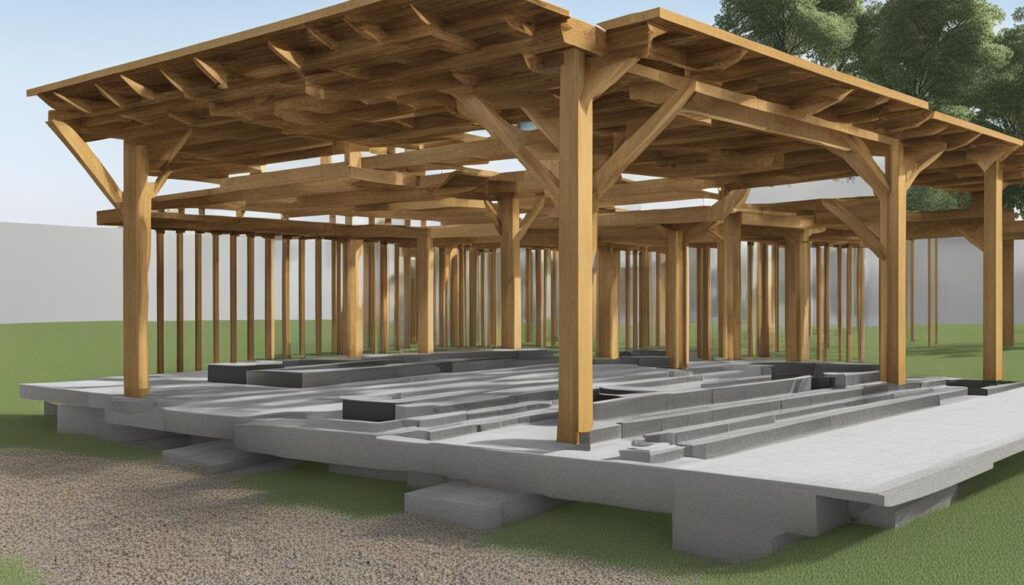Building a sturdy home starts from the ground up, and a pier and beam foundation design is a reliable choice for long-lasting stability. With expert tips and best practices, you can ensure a solid foundation for your dream home.
A pier and beam foundation is a versatile option that offers several advantages. It consists of piers, typically made of concrete blocks, and beams, which can be constructed from wood or concrete. This grid-like system creates a space between the soil and the home, making it ideal for areas prone to flooding. Additionally, it is cost-effective and suitable for uneven ground, providing a level base for construction.
One of the key benefits of a pier and beam foundation is the accessibility it offers for repairs and maintenance. With an elevated structure, you can easily access the underside of your home to address any issues that may arise. However, it’s essential to be mindful of proper ventilation and take precautions against potential pests and subpar construction that could affect the integrity of the floors.
When designing and installing a pier and beam foundation, careful planning and execution are crucial. The process involves excavation, placing the piers, installing the beams, and finishing the project with backfill. To ensure a successful outcome, it’s recommended to consult with professionals who specialize in pier and beam foundation design and installation.
In the next sections, we will explore the step-by-step process of designing and installing a pier and beam foundation, as well as common issues that may arise and the necessary repairs. By following expert advice and implementing proper maintenance, you can enjoy the benefits of a sturdy pier and beam foundation for years to come.
How to Design and Install a Pier And Beam Foundation
The process of designing and installing a pier and beam foundation involves several steps. By following these steps, you can ensure a sturdy and durable foundation for your home.
- Excavation: Begin by excavating the area where the piers will be placed. This involves removing the soil to create space for the foundation.
- Placing the Piers: Once the area is excavated, it’s time to place the piers. Piers can be made of concrete, brick, stone, or wood. Ensure that the piers are placed evenly and at the correct height. Use a spirit or laser level to verify their uniformity.
- Installing the Beams: After the piers are in place, it’s time to install the beams. Beams are usually made of wood, steel, or concrete and are placed perpendicular to the piers. Secure the beams using brackets or reinforcing bars (rebar) and concrete.
- Backfill and Finish: Once the piers and beams are installed, the excavated area is backfilled with dirt. This adds stability and prevents movement. Make sure the backfilled dirt is properly compacted. Finally, grade the surrounding area for proper drainage.
Designing and installing a pier and beam foundation is a complex process that requires careful planning and execution. It is important to consult with a professional before undertaking any foundation project to ensure a successful installation.
Common Issues and Repairs for Pier And Beam Foundations
If you notice tight or loose interior doors, diagonal cracks in walls near windows or doors, or uneven and bouncy flooring, it could be a sign of pier and beam foundation failure. But don’t worry, there are several repair options available to address these issues and restore the stability of your home.
To prevent foundation issues caused by clay-based soil and water accumulation, consider landscaping and drainage improvements. Proper drainage can help divert water away from your foundation, reducing the likelihood of damage. Installing retaining walls can provide additional support and help correct drainage issues that may contribute to foundation failure.
In some cases, you may need to replace damaged piers or beams. Water damage, insect infestation, and natural wear and tear can weaken the structural integrity of these components. By replacing them, you can ensure the long-term stability of your pier and beam foundation.
Maintaining a good drainage system, keeping your gutters clear of debris, and avoiding planting trees too close to the foundation are important maintenance tips. These practices help prevent moisture buildup and potential damage to your foundation. If you’re unsure about the condition of your foundation or the best course of action to take, it is recommended to consult with professionals like Perma Pier for evaluation and repair.
Should I Apply Preen Before or After I Lay Mulch on a Pier and Beam Foundation?
When considering preen application timing mulch for a pier and beam foundation, it’s best to apply Preen before laying the mulch. This allows the preen to create a barrier against weed growth before the mulch is spread, ensuring better long-term protection for your foundation.










